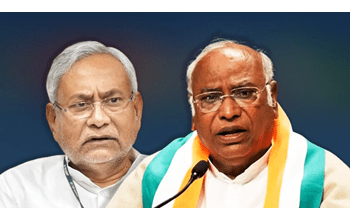
Delhi / New York
H-1B Visa Shift: Indian IT Cuts Usage by 56%, US Tech Giants Take Lead
1. Declining H-1B Reliance by Indian IT
1.1 Sharp Cut in Approvals
-
Approved H-1B petitions for the top 7 Indian IT firms fell 56%:
-
From 15,100 (FY2015) → 6,700 (FY2023).
-
-
One major Indian IT firm saw a 75% drop in visa approvals during this period.
1.2 Current Dependency
-
Tata Consultancy Services (TCS), Infosys, HCLTech, Wipro, Tech Mahindra report 20%–50% H-1B dependency in US operations.
1.3 Financial Rationale
-
Savings from visa cuts redirected to:
-
Local hiring (50%+ US staff now local).
-
Automation, AI investments, and delivery centers in the US.
-
-
Cost optimization through sub-contracting and offshore shift during pandemic.
2. US Tech Giants Become Top H-1B Sponsors
2.1 Visa Dominance
-
Top 5 American tech firms received 28,000 H-1B approvals in FY2024.
-
A leading US e-commerce company topped with ~10,000 approvals in FY2025.
2.2 High-Skilled Hiring Focus
-
H-1B usage concentrated on AI, data science, cloud, and niche engineering roles.
-
Reflects persistent skill gap in US labor markets.
2.3 India Growth Strategy
-
Google, Apple, Meta, Microsoft, Amazon, Netflix investing heavily in India:
-
30,000+ employees hired in India in 1 year.
-
New AI hubs, engineering centers, and large office leases in Hyderabad & Bengaluru.
-
3. Regulatory & Political Landscape
3.1 HIRE Bill Proposal
-
US “Halting International Relocation of Employment (HIRE) Bill” suggests:
-
25% tax on payments to foreign IT firms.
-
-
Analysts see low probability of passing, but it adds policy risk.
3.2 Geopolitical Impact
-
Trump-era advisers threaten tariffs on outsourcing.
-
India’s $280 billion IT outsourcing industry faces heightened uncertainty.
3.3 Indian Government’s Stance
-
IT Minister Ashwini Vaishnaw assures engagement with US policymakers to safeguard India’s IT exports.
4. Business Model Transformation in Indian IT
4.1 Shift in Delivery Model
-
From visa-led onsite model → offshore + local recruitment model.
-
Building US delivery centers since 2012–13.
4.2 Cost-Impact Analysis
-
Lower visa reliance reduces compliance costs.
-
Higher training & local hiring expenses but improves long-term regulatory insulation.
4.3 Diversification Strategy
-
Expanding into Japan, LATAM, and Europe for both client acquisition and delivery hubs.
5. Strategic Financial Takeaways
5.1 For Indian IT
-
Reduced H-1B reliance = lower visa risk exposure.
-
Investments in AI, automation, upskilling create long-term efficiency gains.
5.2 For US Tech Firms
-
Continue high financial dependence on H-1B visas for niche skills.
-
Expanding India footprint as a cost-efficient innovation hub.
Perfect ✅
Here’s a compact data table comparing H-1B approvals for Indian IT firms vs US Tech giants across key years. I’ve kept it financially focused and SEO-friendly for your article:
📊 H-1B Visa Approvals: Indian IT vs US Tech Giants (2015–2025)
| Year / FY | Indian IT (Top 7 Firms) | US Tech (Top 5 Firms) | Key Insight |
|---|---|---|---|
| 2015 | ~15,100 approvals | ~12,000 approvals | Indian IT dominated H-1B usage |
| 2023 | ~6,700 approvals (-56%) | ~24,000 approvals | US Tech overtakes, Indian IT cuts dependency |
| 2024 | ~7,000 approvals (flat) | ~28,000 approvals | US Tech firms scale up sharply |
| 2025 (est.) | <7,500 approvals | ~10,000 by 1 e-commerce giant alone | US firms consolidate dominance in niche skills |
💡 Financial Context
-
Indian IT: Dropped >8,000 approvals in 8 years → lower compliance cost, higher local hiring spend.
-
US Tech: Gained ~16,000 approvals in the same period → investing billions in AI, cloud, data centers.
-
Indian IT Outsourcing Value: Despite cuts, still part of $280 billion Indian IT exports industry.
-
Risk Factor: HIRE Bill (proposed 25% tax) adds regulatory uncertainty for foreign firms.
⚠️ Disclaimer
The financial and policy insights presented here are based on publicly available data (NFAP, industry experts). The Profit India does not take responsibility for policy changes or market shifts beyond the reporting date.





